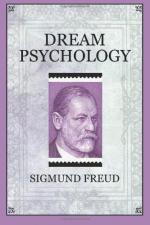[1] They share this character of indestructibility with all psychic acts that are really unconscious—that is, with psychic acts belonging to the system of the unconscious only. These paths are constantly open and never fall into disuse; they conduct the discharge of the exciting process as often as it becomes endowed with unconscious excitement To speak metaphorically they suffer the same form of annihilation as the shades of the lower region in the Odyssey, who awoke to new life the moment they drank blood. The processes depending on the foreconscious system are destructible in a different way. The psychotherapy of the neuroses is based on this difference.
[2] Le Lorrain justly extols the wish-fulfilment of the dream: “Sans fatigue serieuse, sans etre oblige de recourir a cette lutte opinatre et longue qui use et corrode les jouissances poursuivies.”
[3] This idea has been borrowed from The Theory of Sleep by Liebault, who revived hypnotic investigation in our days. (Du Sommeil provoque, etc.; Paris, 1889.)
VII
THE FUNCTION OF THE DREAM
Since we know that the foreconscious is suspended during the night by the wish to sleep, we can proceed to an intelligent investigation of the dream process. But let us first sum up the knowledge of this process already gained. We have shown that the waking activity leaves day remnants from which the sum of energy cannot be entirely removed; or the waking activity revives during the day one of the unconscious wishes; or both conditions occur simultaneously; we have already discovered the many variations that may take place. The unconscious wish has already made its way to the day remnants, either during the day or at any rate with the beginning of sleep, and has effected a transference to it. This produces a wish transferred to the recent material, or the suppressed recent wish comes to life again through a reinforcement from the unconscious. This wish now endeavors to make its way to consciousness on the normal path of the mental processes through the foreconscious, to which indeed it belongs through




